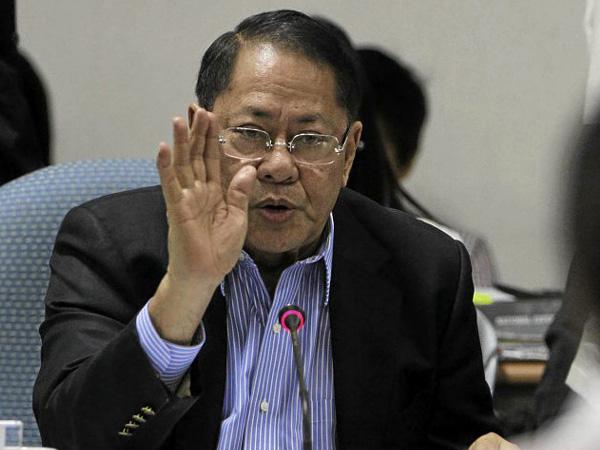
Former Senator Edgardo Angara. INQUIRER file photo
What better way to mark the 50th anniversary of the Association of Southeast Asian Nations (Asean) than to unveil an initiative that will see the rise of a life-sized replica of an ancient galleon that established the centuries-old ties between the neighboring countries.
On the eve of the closing ceremony of Asean’s 50th anniversary celebration, the pioneers of The Galeón: Manila-Acapulco Galleon Museum at SM Mall of Asia Complex in Pasay City gave foreign dignitaries a preview of what will become the first international maritime and cultural center in the Philippines.
The replica of the 18th-century galleon Nuestra Señora del Pilar de Zaragosa will be constructed over 17 months starting this month, simulating the way the early Caviteños assembled the vessel from local wooden panels and pegs.
“Out of the 10 Asean countries, eight of them were shippers on this galleon and of the seven dialogue partners, five of them were big, big shippers on the galleon,” former Sen. Edgardo Angara, who conceptualized the museum, said at the soft opening ceremony on Monday night.
He named China, Japan, the United States, India, Cambodia and South Korea as among the main shippers in the Manila-Acapulco galleon trade, the precursor of modern maritime commerce and trade pacts.
“I can’t think of anything more special than launching this in time for the 50th anniversary of the Asean because it shows that these countries were truly bound not just for 50 years but for centuries, before where there was only direct people-to-people contact,” Angara told international guests.
Game changer
He noted that the galleon was a joint effort between artisans of China and workmen from Cavite, Mindoro, Pangasinan and Bicol, and such a historical partnership was a “game-changer” as the trading superpower embarked on another Silk Road, the “One Belt, One Road” initiative.
“That’s how the world is getting connected rapidly, how communication has deeply transformed our world and we just hope that the transformation is for the better,” the former chair of the Metropolitan Museum of the Philippines said.
But for the Filipinos, The Galeón will be a teaching museum that will arm the new generation with knowledge and a sense of pride about the achievements and ventures of Filipino seafarers during the colonial era, Angara said.
“We want to teach our children that our ancestors did something worthwhile, not simply for themselves, but for the material and cultural enrichment of the planet,” he added.
One vision
In his remarks, Foreign Secretary Alan Peter Cayetano said the initiative was an important milestone that would aid the country in embarking on an independent foreign policy by helping Filipinos, “deprived about their history and heritage,” to articulate their national identity.
“If we can put this together truly, it will be the time for Filipinos to shine and we do that in the context of the Asean community—of having one vision, one identity and one community,” Cayetano said. “The history of the galleon trade is not a history of one people or one country, it is a shared history.”
The Galeón is a collaborative initiative by Angara, chair of the Museo del Galeón Inc., and former Ambassador of Mexico to the Philippines Tomas Calvillo Unna, with support from the private sector led by SM Prime Holdings, headed by Hans Sy.
The Sy family, who donated prime space spanning 8,000 square meters at the MOA complex in Pasay, is also funding the construction of the four-story structure estimated to cost P600 million.
The Monday night affair, hosted in partnership with the Department of Foreign Affairs, also offered guests a sneak peak into the other features of the museum: exhibits of galleon trade artifacts loaned from various museums in different parts of the world and the Center for Pacific Trade and Cultural Studies, which will support the academic and research initiatives on the galleon trade, particularly within Southeast Asia and the Asia-Pacific region.